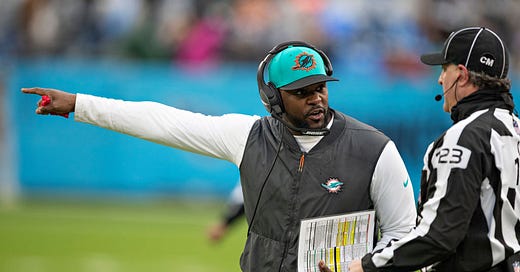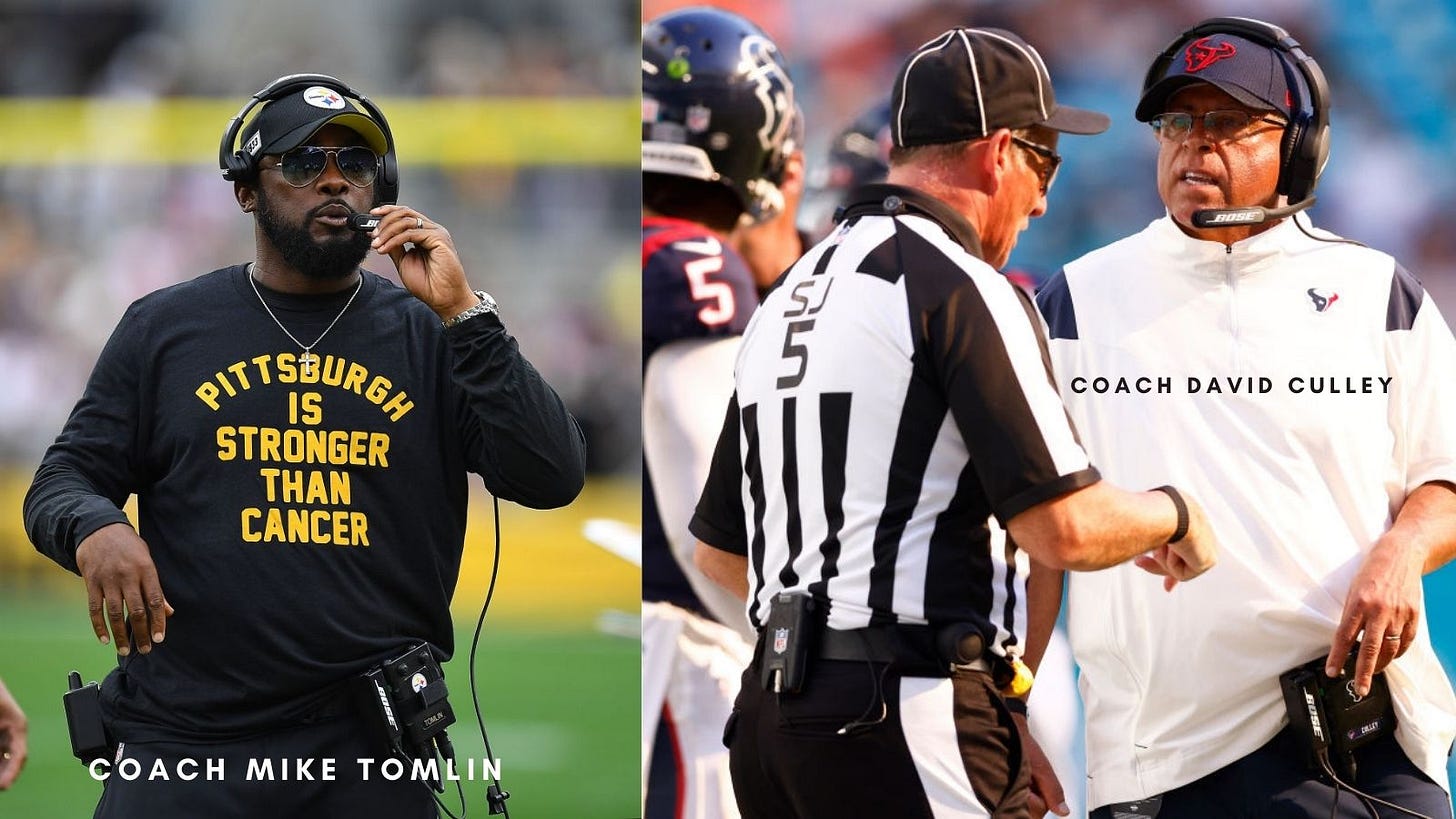Brian Flores Sues the NFL. What Took So Long?
From College Football to the NFL, Blacks Aren't Treated as Management Material
This is a reader-supported newsletter. Both free and paid subscriptions are available. The best way to join the community and support my work is by taking out a paid subscription.
Brian Flores is suing the National Football League and the only question I have is “What took so long?” I’m not referring specifically to Flores’ lawsuit, but to making public the racism inherent in the NFL like a vestigial limb.
Ah, you say, but don’t Black players dominate with 57.5 percent being Black and only 24.9 percent being White? That’s like saying a fast food chain isn’t racist because 57.5 percent of their fry cooks are Black. The issue isn’t how many Black fry cooks or baristas or halfbacks you have, it’s how many Blacks have the opportunity to rise into upper management.
In the case of the NFL, not many. Which is odd when you consider that the majority of players are Black and therefore offer a bigger pool of trained professionals from which to choose. As with most businesses, it makes sense to promote from within because employees have the experience and knowledge to manage.
The alabaster ceiling stifles Black ambition and sends a clear message that “your kind” aren’t good enough. Let’s look at the numbers. Despite nearly 60 percent of the NFL players being Black, at the beginning of the 2021 season only three of the 32 head coaches were Black: Pittsburgh Steelers’ Mike Tomlin, Houston Texans’ David Culley and Miami Dolphins’ Brian Flores. At the end of the season, Culley and Flores have been fired leaving only Tomlin as the single Black head coach.
College football programs are equally disappointing. When the 2020 season began there were 14 Black head coaches out of 130 FBS (Football Bowl Subdivision, the highest level of college football) programs), though 48.5 percent of players were Black. Michigan State coach Mel Tucker, who is Black, hoped things would change in 2021. “Once I saw jobs start to open up, I wanted to see if there was going to be anything different, whether there would be more minorities, coaches of color, hired as head coaches,” he said. “I didn’t see a noticeable difference. I didn’t see anything that showed me that there was any type of change in behavior in the hiring process.”





